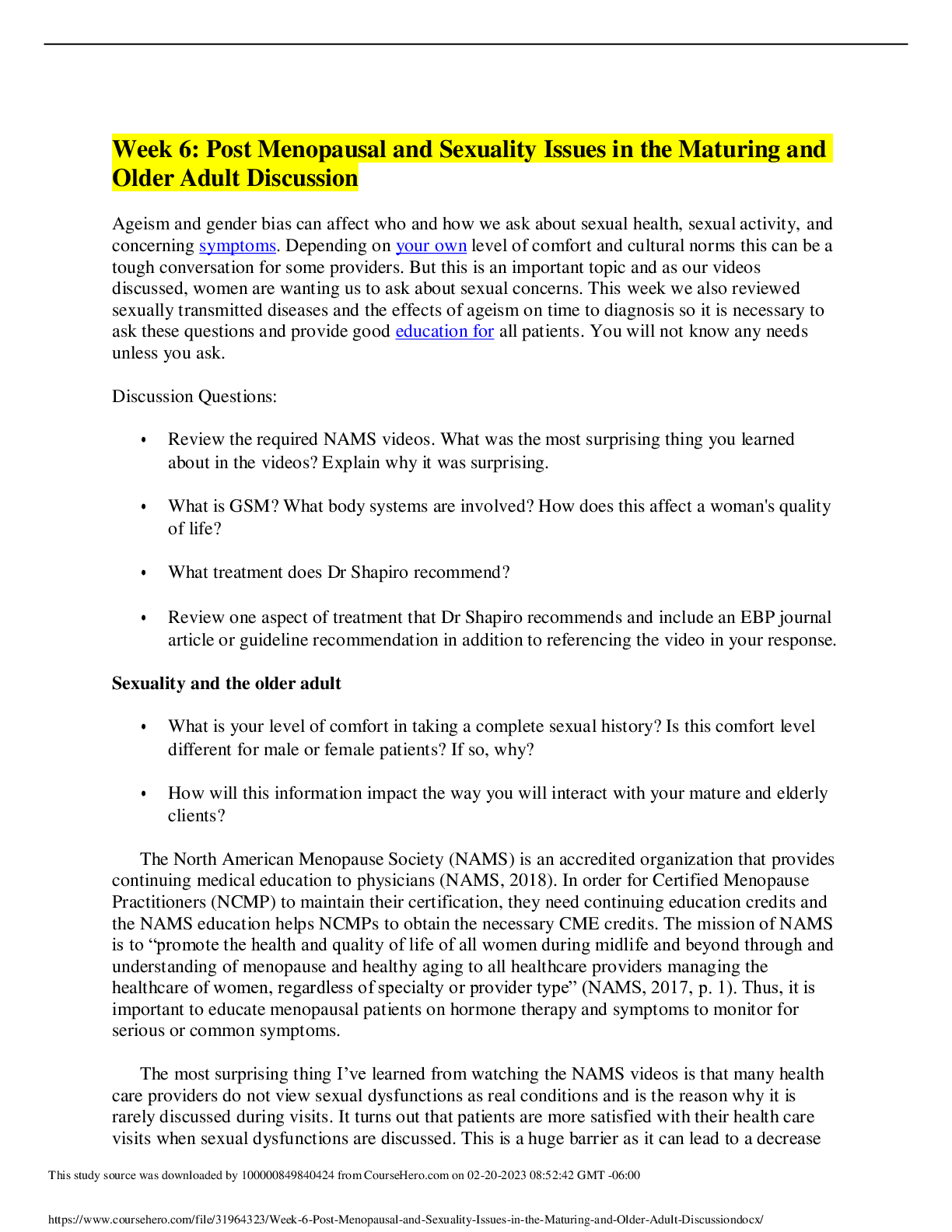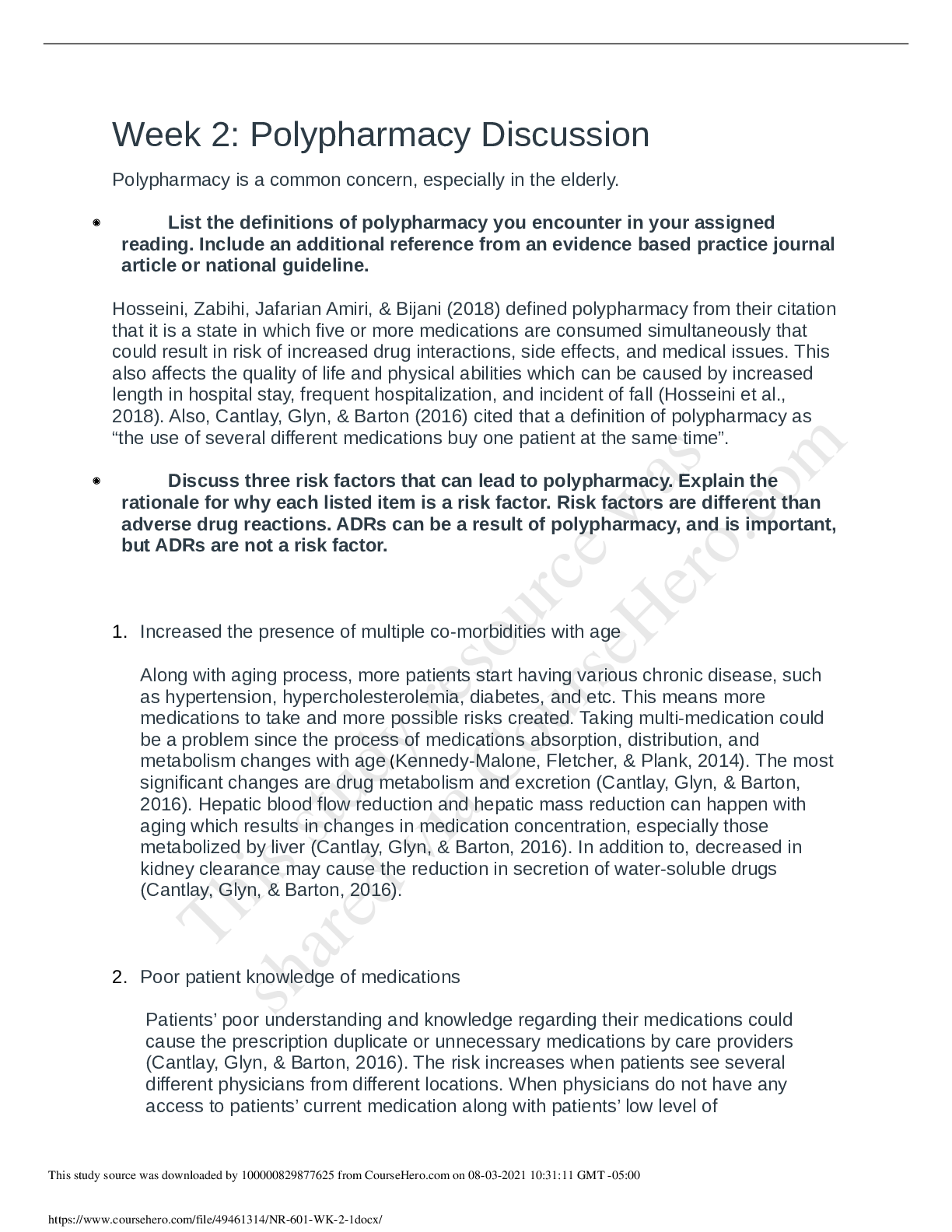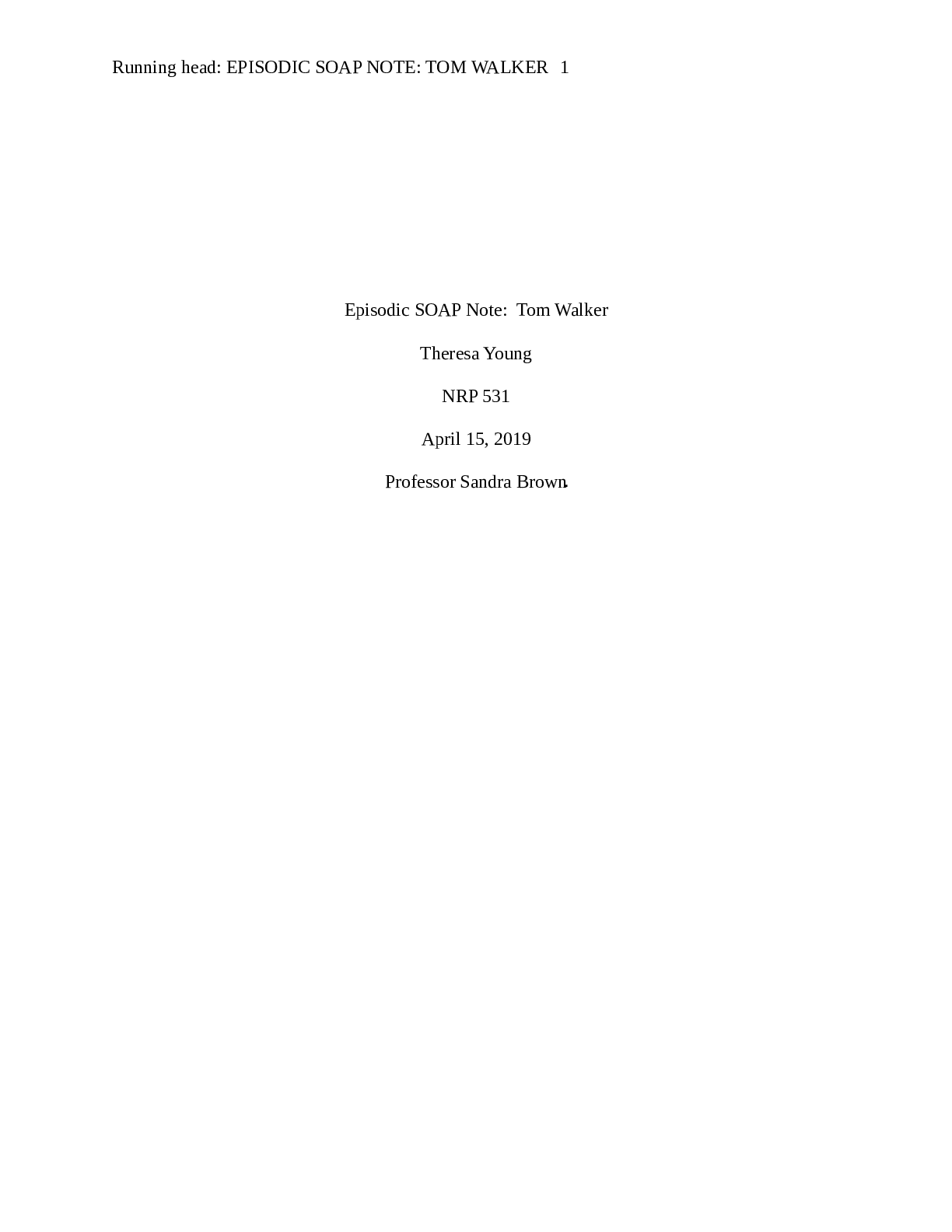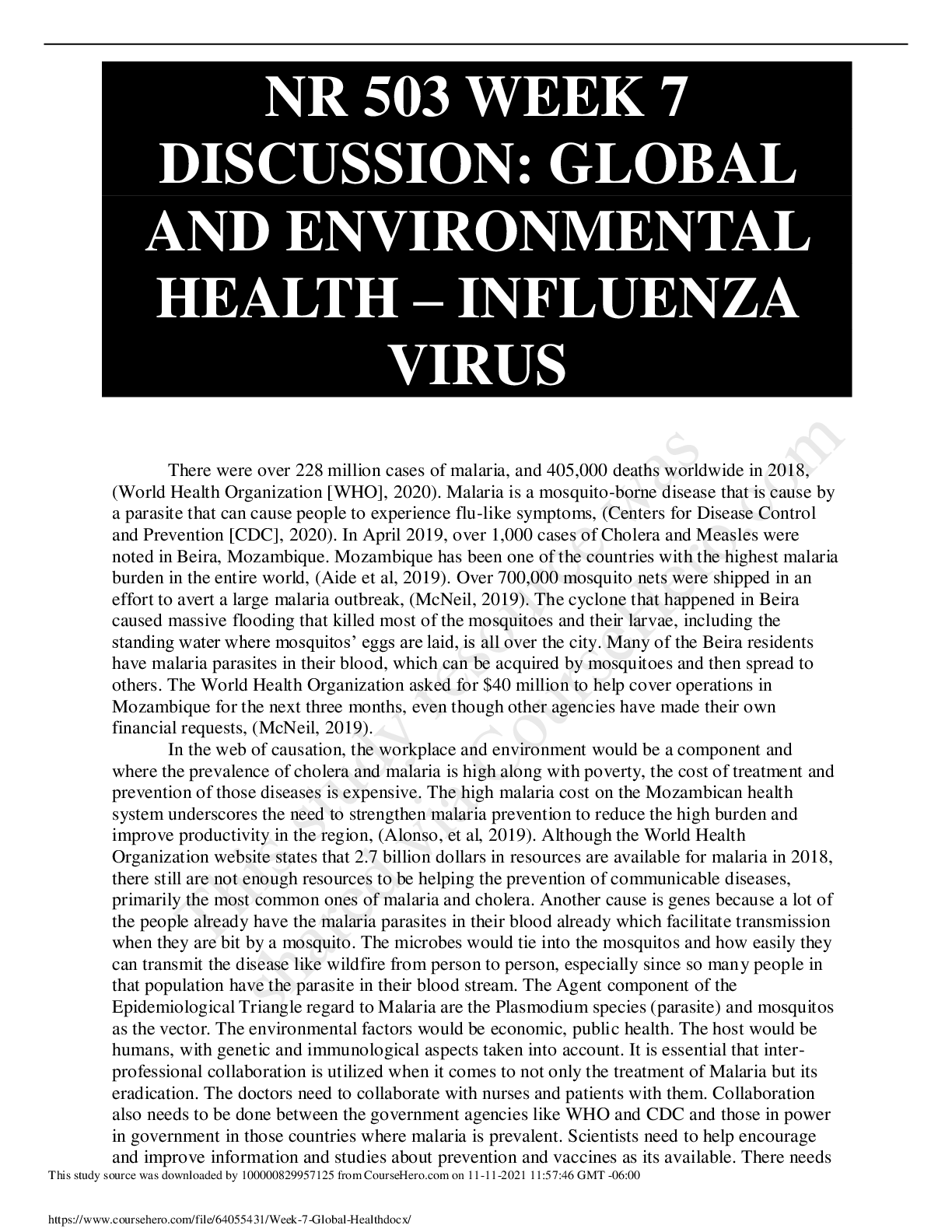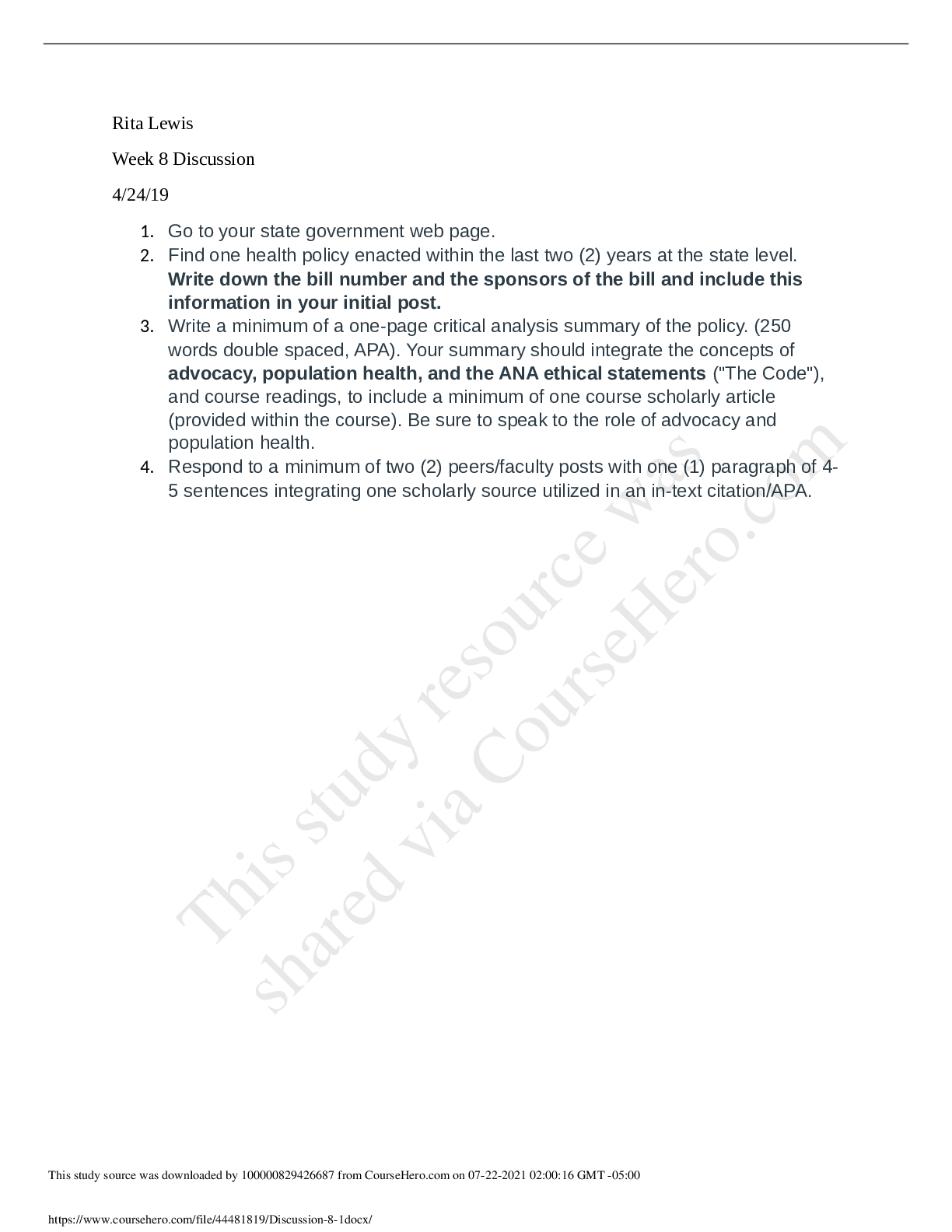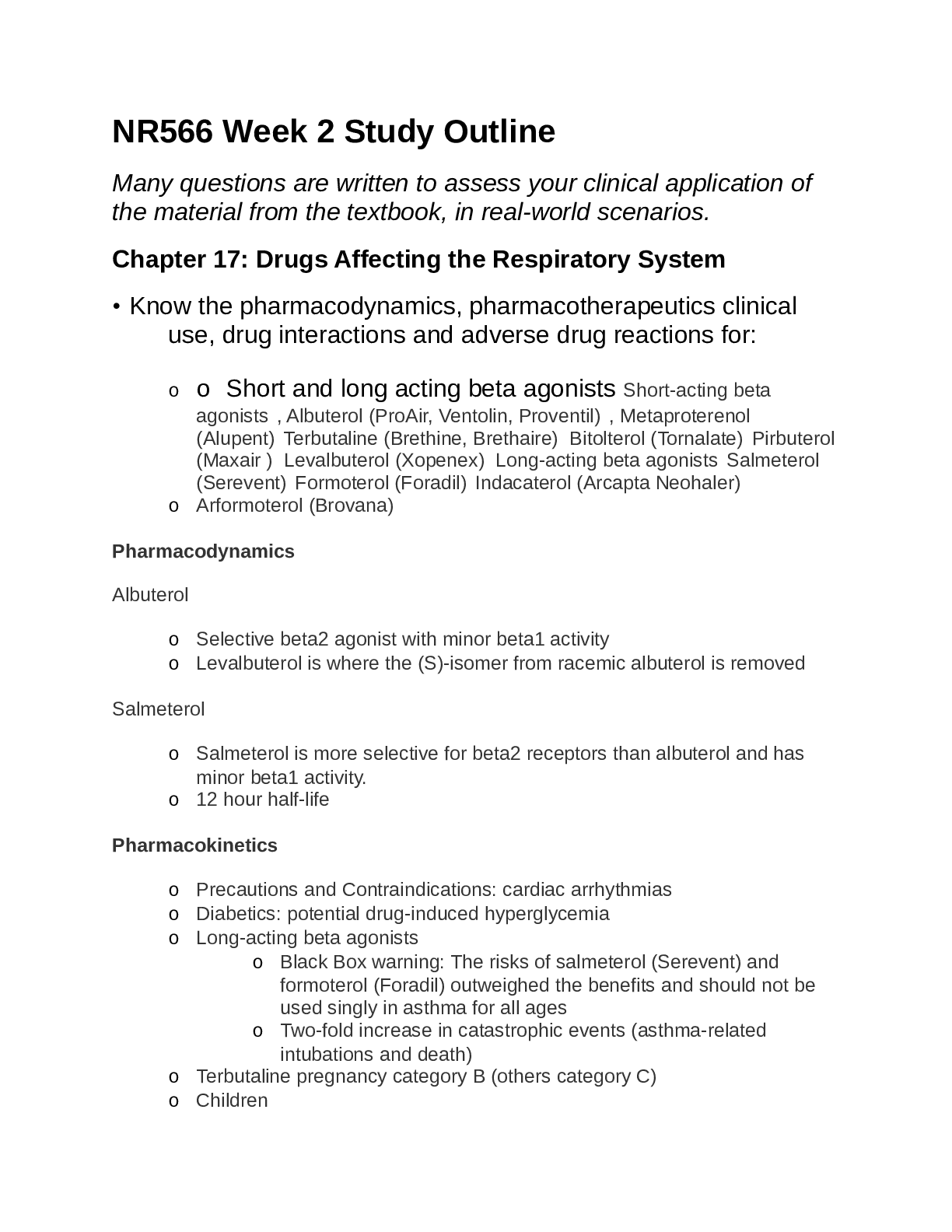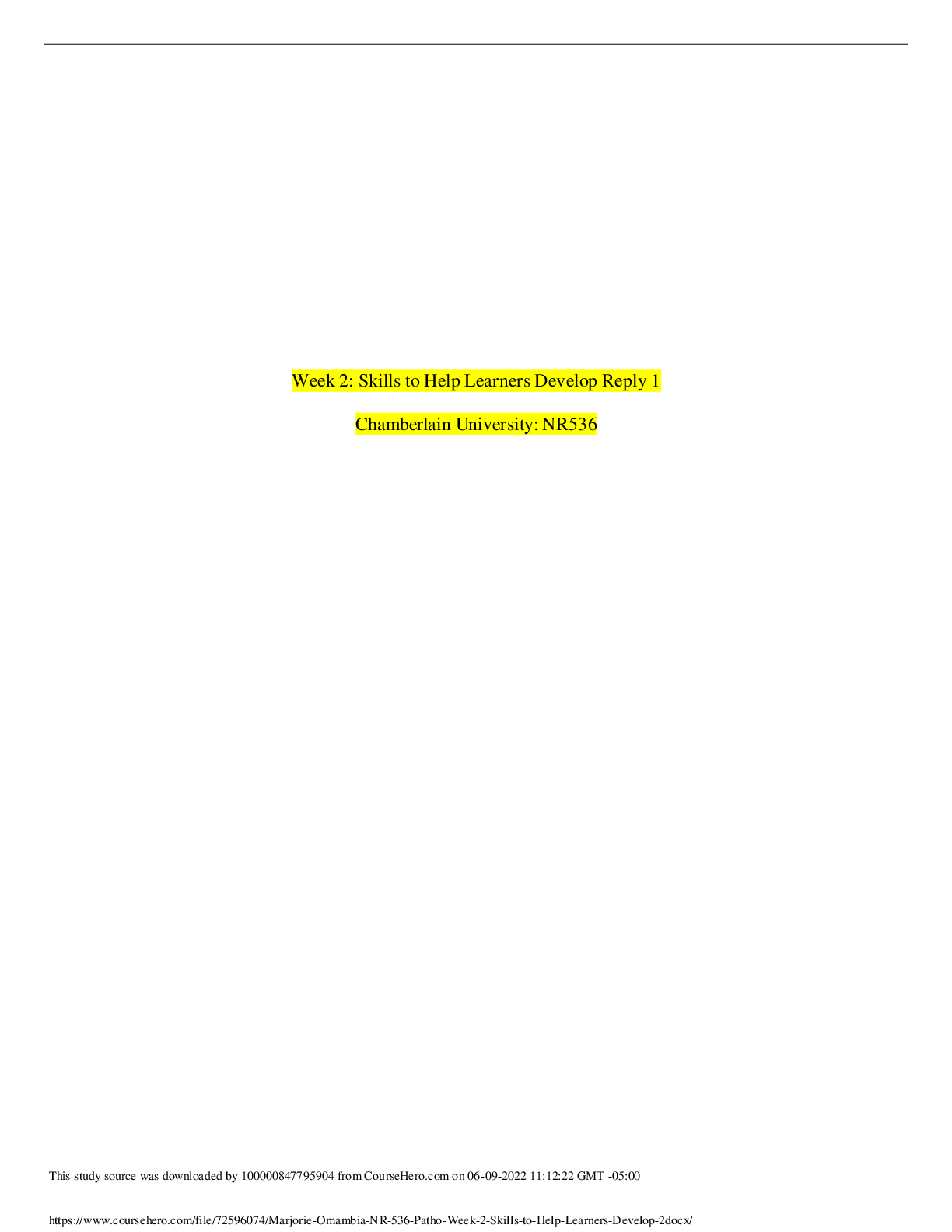History > DISCUSSION POST > ECON 101Ch. 11 Outline AP Euro Spielvogel, Western Civilization Since 1300, 9e Updated AP® Edition (All)
ECON 101Ch. 11 Outline AP Euro Spielvogel, Western Civilization Since 1300, 9e Updated AP® Edition Chapter 11 Outline: The Later Middle Ages: Crisis and Disintegration in the Fourteenth Century
Document Content and Description Below
I. A Time of Troubles: Black Death and Social Crisis A. Famine and Population 1. Period of cold, bad weather conditions “Little Ice Age” led to famine and starvation. (first ½ of 19th century)... 2. Population increased because of agricultural superiority. 3. Productive land became overpopulated and people started to move. B. The Black Death: From Asia to Europe 1. Role of the Mongols Originated in Asia, Mongols spread the plague, high percentages of populations died. The Plague also spread to the middle east. C. The Black Death in Europe 1. Life and Death: Reactions to the Plague Trade routes made a large contribution to the diffusion of the plague through Europe throughout 1347-1351. Plague did not die out after several centuries, until around 1500. People began to do behave absurdly, considering that their days were numbered. Many people reacted by connecting the plague to religion, for example Christians blamed Jews of poisoning wells and spreading the plague. 2. Art and the Black Death The plague obliterated many great artists and those who survived were left with no optimism. Art began to be based around death. D. Economic Dislocation and Social Upheaval 1. Noble Landlords and Peasants There was a shortage of labor which increased wages for workers. Aristocrats attempted to lower the wages of workers. 2. Peasant Revolt in France Peasants began to get frustrated and a revolt occurred in France. Nobles did not like how wages were higher and prices were lower since they wanted to sustain their privileged position. 4. An English Peasant Revolt Peasants and Aristocrats were both fighting to have the best possible place in the social class. The monarchy imposed a tax on all citizens which led peasants to revolt when they refused to pay the tax. 5. Revolts in the Cities Trade rates declined after the plague. Manufacturers responded to the drop in demand by restricting competition and resisting demands from lower classes. Industrial revolts by workers proceeded as they could not make any progress since their wages were low. [Show More]
Last updated: 2 years ago
Preview 1 out of 2 pages

Buy this document to get the full access instantly
Instant Download Access after purchase
Buy NowInstant download
We Accept:

Reviews( 0 )
$12.00
Can't find what you want? Try our AI powered Search
Document information
Connected school, study & course
About the document
Uploaded On
Aug 26, 2021
Number of pages
2
Written in
Additional information
This document has been written for:
Uploaded
Aug 26, 2021
Downloads
0
Views
92


